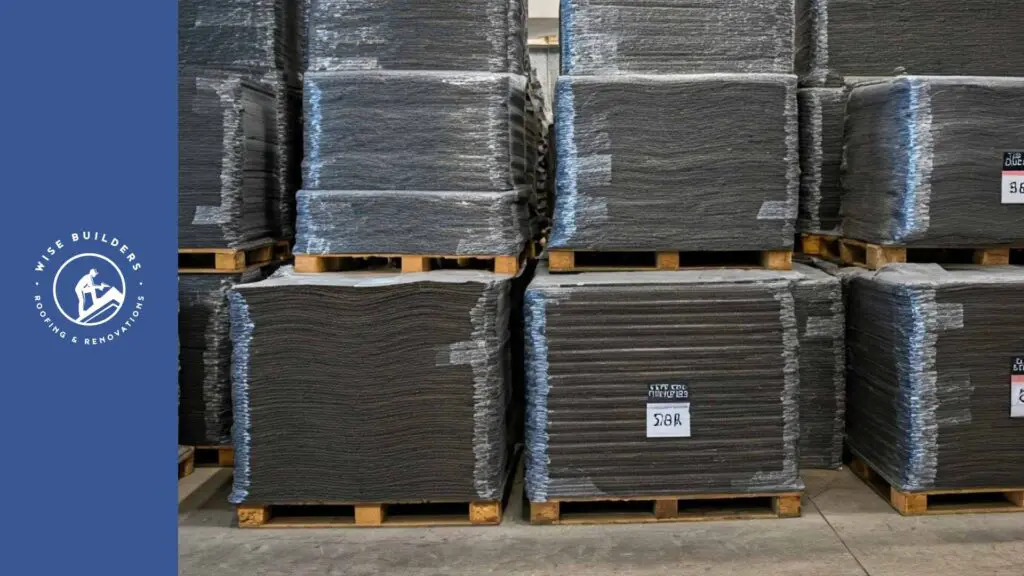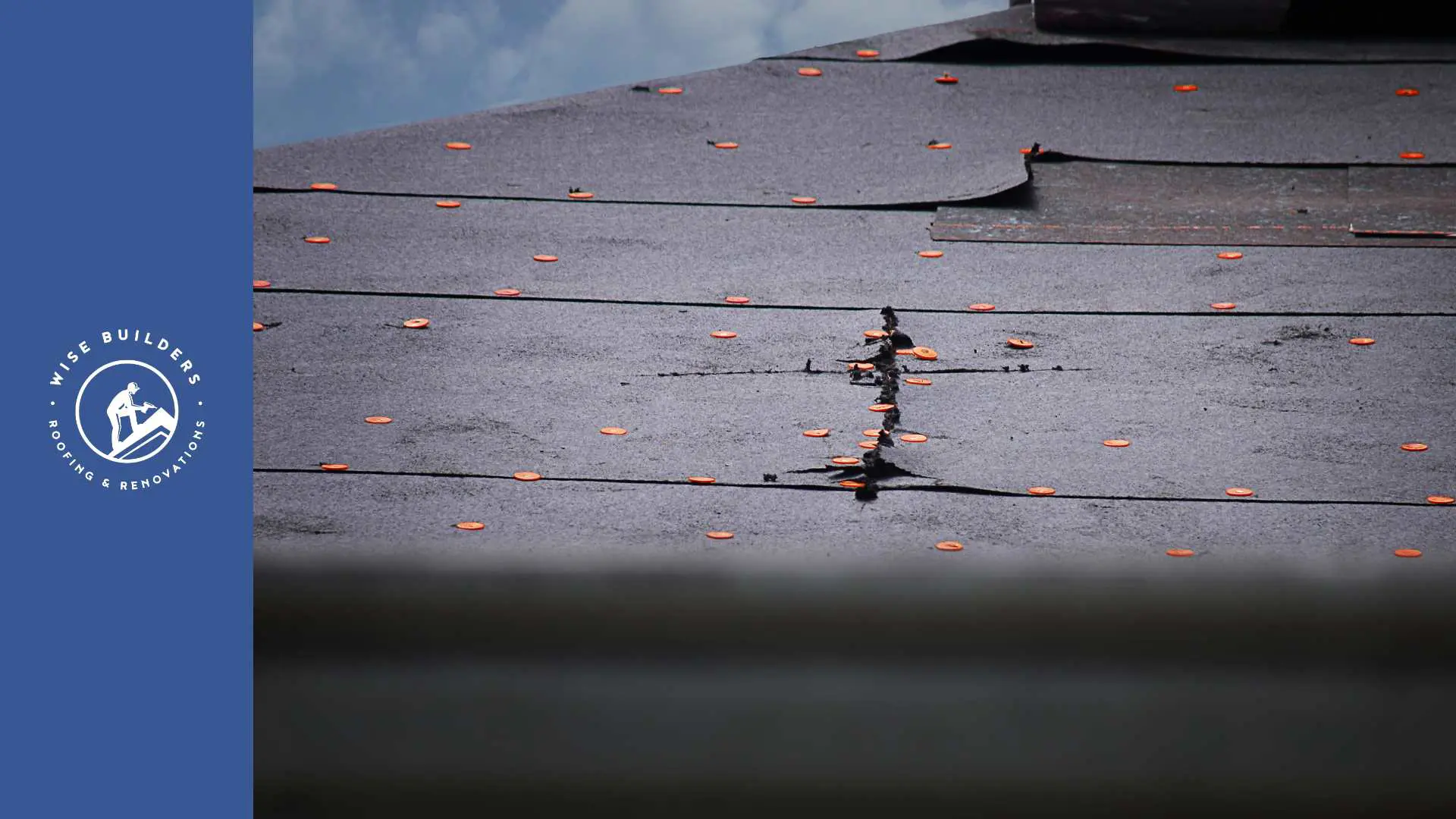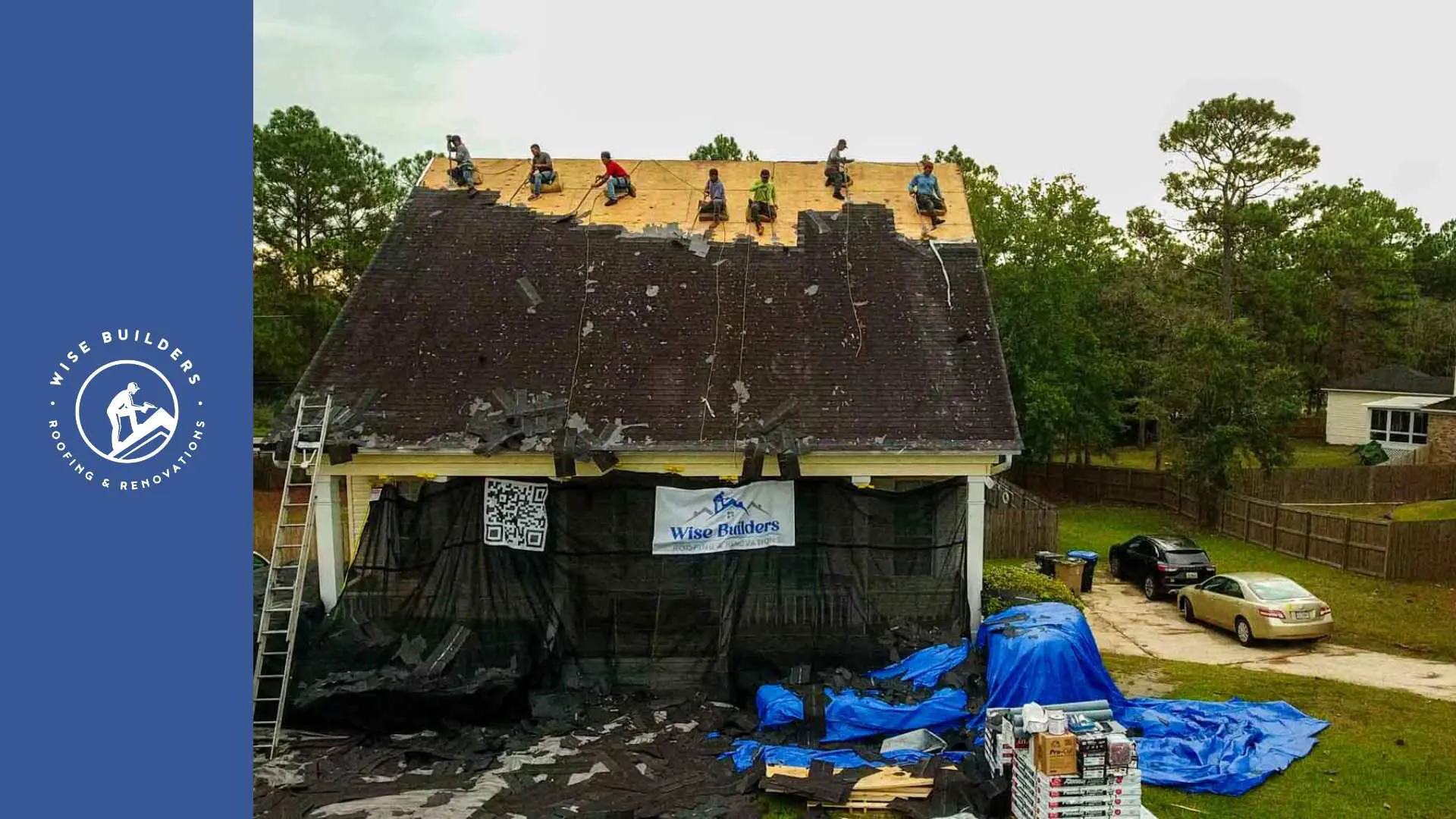
Key Highlights
- Roof underlayment is a crucial component of any roofing system, providing an extra layer of protection against moisture.
- It acts as a secondary barrier to prevent leaks, protecting the roof deck and the interior of your home.
- There are various types of underlayment available, each with its advantages and suitability for different climates and roofing materials.
- Proper installation is key to ensuring the effectiveness of the underlayment.
- Understanding the different types of underlayment and their installation methods can help homeowners make informed decisions when replacing or installing a new roof.
Introduction
While shingles often take center stage, a hidden hero plays a critical role in the effectiveness and longevity of your roof – roofing underlayment. This layer of protection, installed between your roof deck and shingles, acts as a crucial barrier against the elements, preventing leaks and ensuring the integrity of your roofing system.
Understanding Roof Underlayment

Roof underlayment might not be visible, but its role in safeguarding your home shouldn’t be underestimated. Imagine it as a shield against the unpredictable forces of nature, preventing water damage and ensuring the long-term health of your house.
Essentially, it serves as a secondary defense against water intrusion, backing up your shingles in case of heavy rain, wind-driven rain, or even ice dams. This added layer of protection is paramount in maintaining a dry and structurally sound home.
Definition and Functions
Roof underlayment is a water-resistant or waterproof barrier material installed on top of the roof deck, directly beneath shingles or other roofing materials. It serves as the first line of defense against moisture penetration, providing an essential layer of protection for your home. The primary function of underlayment is to prevent leaks that can lead to costly damage.
Furthermore, roof underlayment acts as a secondary water barrier, safeguarding the roof deck if water infiltrates the shingles due to strong winds, heavy rain, or other weather events. This layer helps prevent moisture damage, such as wood rot, mold growth, and insulation deterioration.
Additionally, underlayment can contribute to energy efficiency by acting as a thermal barrier, reducing heat transfer between the attic and living spaces.
Importance in Roofing System
Within the entire roofing system, the underlayment plays a vital role, working in conjunction with other roofing components to provide comprehensive protection. Primarily, it acts as a secondary layer of protection against water damage. While shingles are the first line of defense, underlayment provides a critical backup should the shingles fail to prevent water penetration.
This characteristic is especially important during severe weather events, such as heavy rain, wind-driven rain, or ice dams, where water may find its way under the shingles. By preventing water from reaching the roof deck, underlayment protects the structural integrity of the roof and prevents costly repairs associated with water damage.
Furthermore, roof underlayment helps to extend the lifespan of the roof deck by shielding it from moisture, which can cause rot, decay, and weaken the overall structure.
Types of Underlayment Used in Roofing
The world of roofing underlayment, however, is not one-size-fits-all. Several types of underlayment have emerged, each with its own set of characteristics and benefits. Choosing the appropriate type depends on factors like climate, roof slope, and budget.
Let’s explore the most common types of roof underlayment to help you make an informed decision:
Asphalt-Saturated Felt
Asphalt-saturated felt, commonly known as felt paper or tar paper, is a traditional type of underlayment that has been widely used for decades. This type of underlayment is made from a base of organic felt or paper, saturated and coated with asphalt to provide water resistance.
Available in standard weights, typically 15 pounds or 30 pounds per 100 square feet, asphalt-saturated felt is a cost-effective option for roof underlayment. The heavier weight, 30-pound felt paper, offers greater durability and tear resistance compared to the lighter 15-pound option.
While not entirely waterproof, asphalt-saturated felt effectively sheds water, making it suitable for steeper-pitched roofs where water runs off quickly. However, for low-slope roofs or areas prone to water accumulation, other types of underlayment, such as synthetic or rubberized asphalt, might be more appropriate.
Synthetic Underlayment
In recent years, synthetic underlayment has gained immense popularity as a robust and versatile alternative to traditional felt paper. This type of underlayment is crafted from synthetic materials, typically polypropylene or polyethylene, which are engineered for enhanced durability and water resistance. Unlike felt, synthetic underlayment boasts superior tear resistance, making it easier to handle and install.
Moreover, its lightweight nature allows for larger rolls, reducing the number of seams and potential leak points. The slip resistance offered by some synthetic underlayments enhances worker safety during installation, particularly on steeper roofs. Also, synthetic underlayment exhibits excellent resistance against UV degradation, mold, and mildew, ensuring long-lasting performance. Its permeability allows for breathability, reducing the risk of condensation buildup underneath the roofing materials.
Rubberized Asphalt
Considered a premium option in the realm of roofing underlayment, rubberized asphalt underlayment provides exceptional waterproof protection. It is manufactured by combining asphalt with rubber polymers, creating a highly water-resistant barrier. The addition of rubber polymers enhances its flexibility, allowing it to conform to the contours of the roof deck more effectively.
One of the key features of rubberized asphalt underlayment is its self-adhesive backing, protected by a peel-off release strip. This sticky backing creates a strong bond with the roof deck, forming a waterproof seal that prevents water from seeping through. This characteristic makes rubberized asphalt underlayment an excellent choice for areas prone to ice dams, such as valleys, eaves, and around roof penetrations.
Due to its exceptional waterproof properties, rubberized asphalt underlayment is highly suitable for low-slope roofs and regions that experience extreme temperatures or frequent freeze-thaw cycles.
Installation Techniques for Effective Performance

While the type of underlayment plays a crucial role in its performance, proper installation is equally important. A well-installed underlayment ensures a waterproof barrier, maximizing the lifespan of your roof.
The following section will guide you through the key installation techniques to ensure effective performance.
Preparing the Roof Deck
Before laying down the underlayment, ensuring a clean and dry roof deck is paramount. Begin by inspecting the entire roof deck for any signs of damage, such as rotted wood, loose boards, or protruding nails. Replace any damaged sheathing and secure loose boards with appropriate fasteners.
Ensure the roof deck is free from debris, such as nails, staples, or shingle fragments, as these can puncture the underlayment and compromise its integrity. A clean and smooth surface will allow the underlayment to lay flat and create a uniform barrier.
Furthermore, inspect the attic space for proper ventilation. Adequate ventilation is crucial to prevent condensation buildup, which can lead to moisture problems in the attic and affect the performance of the underlayment.
Proper Overlap and Fastening Methods
Proper installation of the underlayment is crucial for achieving a waterproof seal and preventing leaks. The following table provides guidelines for overlapping and fastening different types of underlayment:
| Underlayment Type | Overlap | Fastening Method |
|---|---|---|
| Asphalt-Saturated Felt | 6 inches minimum | Roofing nails or staples |
| Synthetic Underlayment | As per manufacturer’s instructions | Plastic cap nails or staples |
| Rubberized Asphalt | As per manufacturer’s instructions, typically 3-4 inches | Self-adhering with optional nails for extra hold |
Ensure that the underlayment is rolled out smoothly and evenly, avoiding wrinkles or creases that can trap water. Overlap the seams properly according to the type of underlayment being used to create a continuous barrier. Utilize the recommended fastening methods to secure the underlayment to the roof deck.
Conclusion
In conclusion, the proper underlayment for shingles is crucial in maintaining the integrity and longevity of your roof. Understanding the functions and types of underlayment helps in choosing the best option for your roofing system. Whether it’s asphalt-saturated felt, synthetic underlayment, or rubberized asphalt, following correct installation techniques ensures effective performance. By preparing the roof deck adequately and employing proper overlap and fastening methods, you can enhance the durability of your roof. Prioritizing the right underlayment contributes to the overall protection and performance of your roofing system. If you have any questions about the lifespan of different underlayments, refer to our FAQs section for more information.
At Wise Builders, We ensure our clients receive the best possible outcomes. Our commitment to quality workmanship and customer satisfaction is unwavering, making us the top choice for residential Roofing services in our community.
Frequently Asked Questions
What is the lifespan of different underlayments?
The lifespan of different types of underlayment varies. Felt typically lasts 5-10 years, while synthetic and rubberized options offer greater durability, ranging from 15 to 30 years. However, various factors, such as climate and installation quality, can influence their lifespan. It’s recommended to consult with a qualified roofing contractor to determine the best type of underlayment for your specific needs and region.







